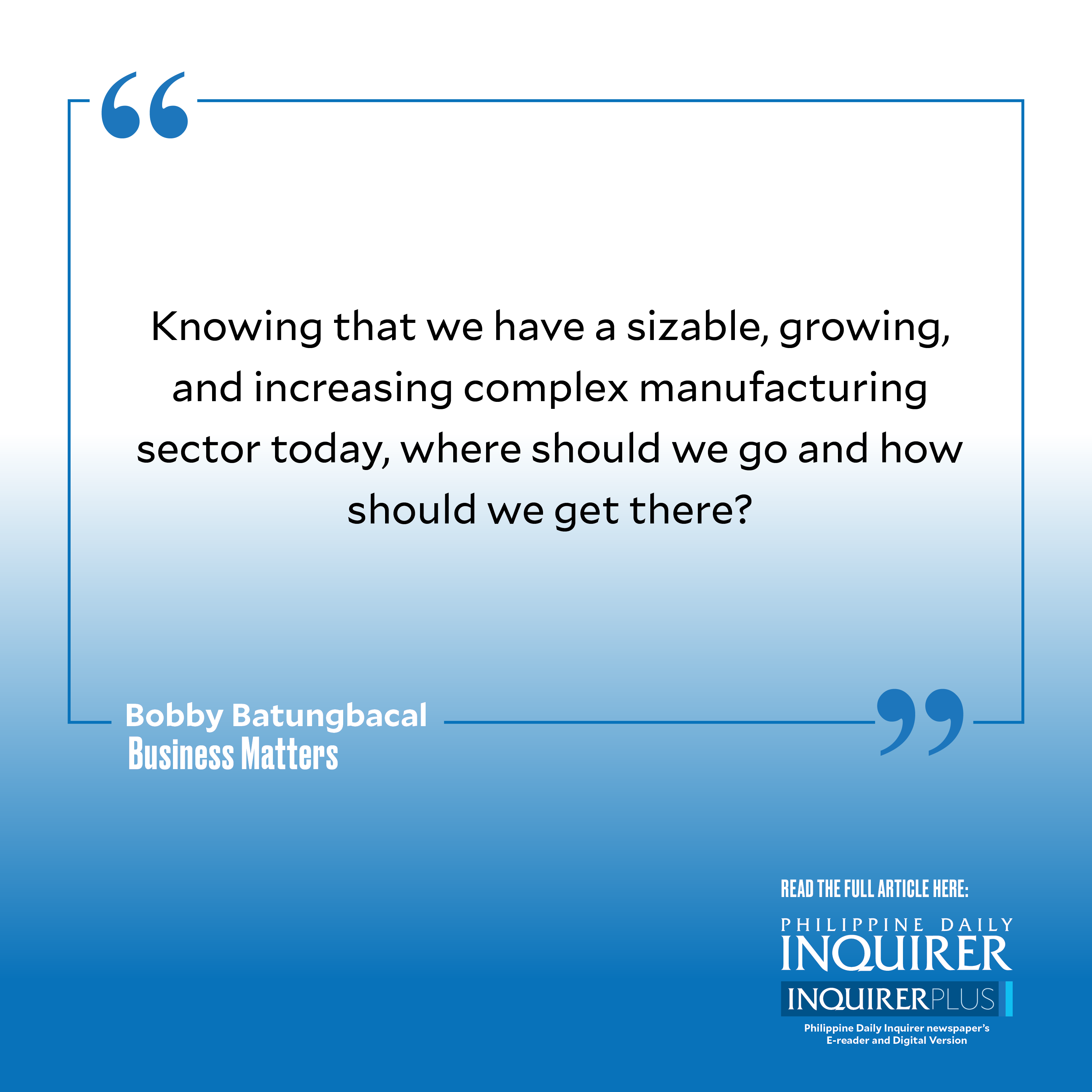The current state of Philippine manufacturing

In the 2023 State of the Nation Address, President Marcos highlighted 12 priority measures, one of them being the Tatak Pinoy (Proudly Pinoy) bill. The policy is a wide-ranging, multisectoral approach to foster national development, envisioning world-class Filipino enterprises producing globally competitive products and services. It calls for a whole-nation approach to increase manufacturing employment, diversification, and complexity.
It therefore makes sense to ask the question: Does Philippine manufacturing have the means to achieve them? What is the current state of the sector? Do we have enough manufacturing left in the country? Is it growing? Is it competitive? How does it compare to other countries? What exactly do we manufacture? Let’s look at the numbers.
Manufacturing is the largest industry sector in the Philippines based on gross value added (GVA), despite the common assumption that places the service sector at the top. In reality, there are 21 sections in the Philippine Standard Industrial Classification, and the service sector is made up of 15 separate sections, all of which are smaller than manufacturing. Manufacturing generated P3.73 trillion, followed by wholesale and retail trading at P3.71 trillion and the financial section at P1.99 trillion in 2022. Manufacturing accounts for 19 percent of GDP as of 2022, slightly lower from 20 percent 10 years ago.
Growing 4.5 percent per annum in the last 10 years. From 2010-2016, the sector grew at an average of 6.3 percent per annum. From 2017-2022, it has slowed down to 2.6 percent, experiencing a contraction during the pandemic. After a rebound in 2021, it grew at 4.9 percent in 2022.
Reached upper middle quantile in United Nations Industrial Development Organization’s (Unido) Competitive Industrial Performance Index, Philippine manufacturing ranks No. 44 out of 153 countries. The Philippines has gone from No. 53 in 2010 to No. 44 in 2021. The most competitive in the index are Germany, China, Ireland, South Korea, and the United States.
Ranks No. 29 out of 215 countries in the world. Using Unido’s National Accounts Database to compare the size of manufacturing industries of countries, the Philippines ranked No. 29 with a total of $80 billion GVA in 2022.
Philippine manufacturing is complex but needs more diversity. Based on the Atlas of Economic Complexity, the Philippines ranked No. 32 in 2021. Constantly rising from No. 74 in 2000 to No. 44 in 2010. However, Philippine manufacturing needs more diversification: It is concentrated on both ends of the spectrum, the low end and high end of complexity. Food manufacturing, low in complexity, is nearly half of the manufacturing industry. On the other hand, the high-tech electronics and semiconductor sector accounts for nearly half of Philippine exports. We’re missing multiple middle technology sectors that provide a diverse, rich, and resilient manufacturing sector.
The Philippines manufactures a wide range of products across 21 divisions. The largest is food manufacturing with 47.6 percent share, chemicals at 12.5 percent, and computer, electronics semiconductor at 11.2 percent. In the last 10 years, wood products grew fastest at 13 percent growth rate per annum, followed by machinery and then chemicals.
Knowing that we have a sizable, growing, and increasing complex manufacturing sector today, where should we go and how should we get there? We should increase manufacturing share of GDP from the current 19 percent to around 24 percent where our peer countries in Association of Southeast Asian Nations are at the moment and target the upper quantile of the Competitive Industrial Performance Index. We can do this by continuously developing our innovative talent to produce more complex products. Reinvigorate the middle-tech sector by leveraging our huge domestic consumer demand. And finally, grow our resourced-based products that are linked to our rich and unique agriculture and marine resources to capitalize on the world’s need for sustainable products in the green and blue economy.
—————-
Bobby Batungbacal is former president of the Samahan sa Pilipinas ng mga Industriya Kimika and former vice president of the American Chamber of Commerce of the Philippines.
—————-
Business Matters is a project of the Makati Business Club (makatibusinessclub@mbc.com.ph).




















